The Light of Jade
Splash. Crash. Click. Clack. Rasp. Grind . . .
I was in the city of Itoigawa, near the mouth of the Hime River, listening to the sound of the pebbles and stones being washed by the sea waves. Long ago, this was the coast where the Jomon people must have collected their rocks. But one must strain one’s eyes when picking rocks on these beaches, because there’s a chance of finding pieces of jade.
It was about ten years ago that I embarked on my jade journey. I’ve been visiting Jomon archaeological sites and village museums, and studying personal collections up and down Japan ever since. One standout discovery to date is the jadestone unearthed at the Sanko site in Yamanashi Prefecture (about 11 cm long, collection of Fuefuki City Board of Education). With all its raw roughness removed, every sharp corner smoothed over, and the surface polished, the stone itself emitted a mystical glow. Its translucent beauty was a sight to behold, and not only that, but when I placed the gem on the palm of my hand, its energy also seemed to flow through my body, as if I were touching another person’s skin. Crystals are long believed to have healing powers, and my theory is that jade serves as an energy pathway. Living creatures hold reservoirs of water; jade holds reservoirs of light. And as I discovered other pieces, like the large jade beads from the Sannai Maruyama site and the jadeite products from the Asahiyama site, both in Aomori Prefecture, I came to wonder where all that jade originally came from. That was what brought me to the jade-producing area of Itoigawa City, Niigata Prefecture.
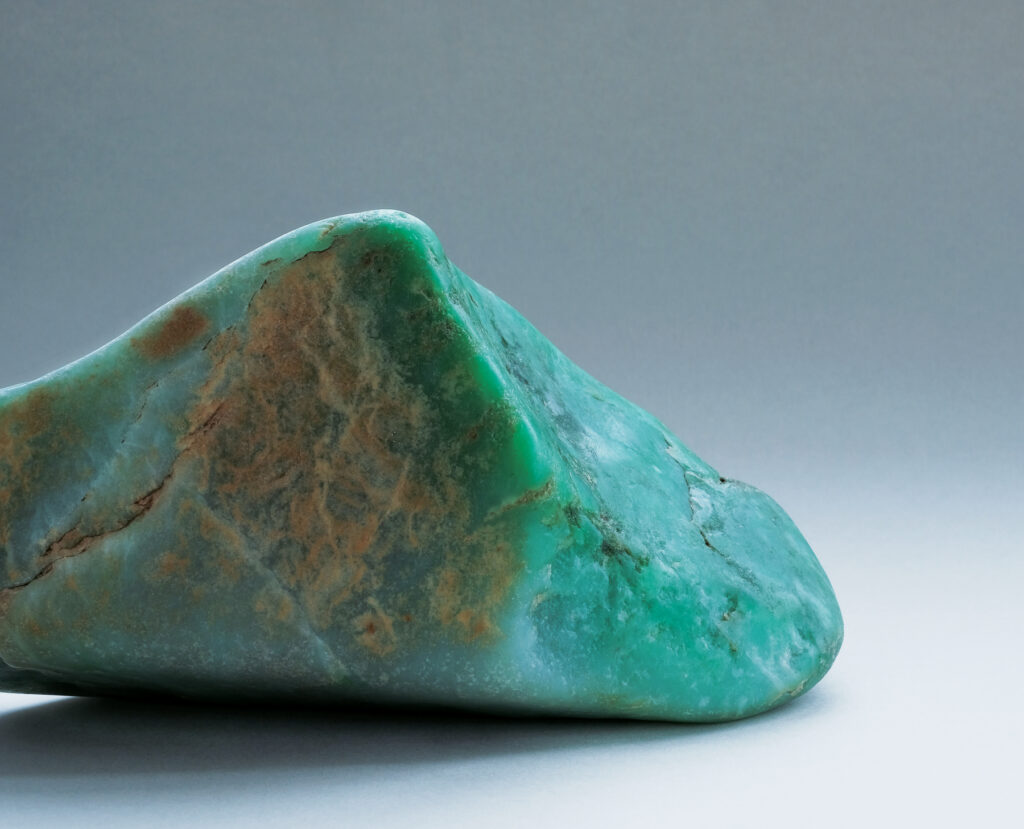
I had heard that crustal movement played a significant part in jade formation, so I decided to stop at the Fossa Magna Museum first. Here, I learned that Itoigawa’s jade was formed deep underground as long as 500 million years ago, pressed by tectonic plates, and lifted to the surface along with serpentinite in the great uplifting of central Japan that formed the Northern Alps. Mountain collapses, mudflows, and landslides then formed jade gorges, and over time, the jade was carried by the rivers to the sea. That certainly explained why Itoigawa boasted far larger deposits of high-quality jade than other areas of Japan.
I was aware that the Fossa Magna is a massive rift marking the boundary between northeastern Japan and southwestern Japan, and that it helped to create Japan’s beautiful landforms like Mt. Fuji and the Yatsugatake Mountains. What I didn’t know was that the water flowing from the Hime River and the Omi River basin into the Sea of Japan carried jade and tremolite, and created an environment rich in stone materials for making beads and axes. What a revelation! I also marveled at the museum’s display of raw jade in a spectrum of colors—white, gray, green, lavender, blue, and black (collection of Fossa Magna Museum).
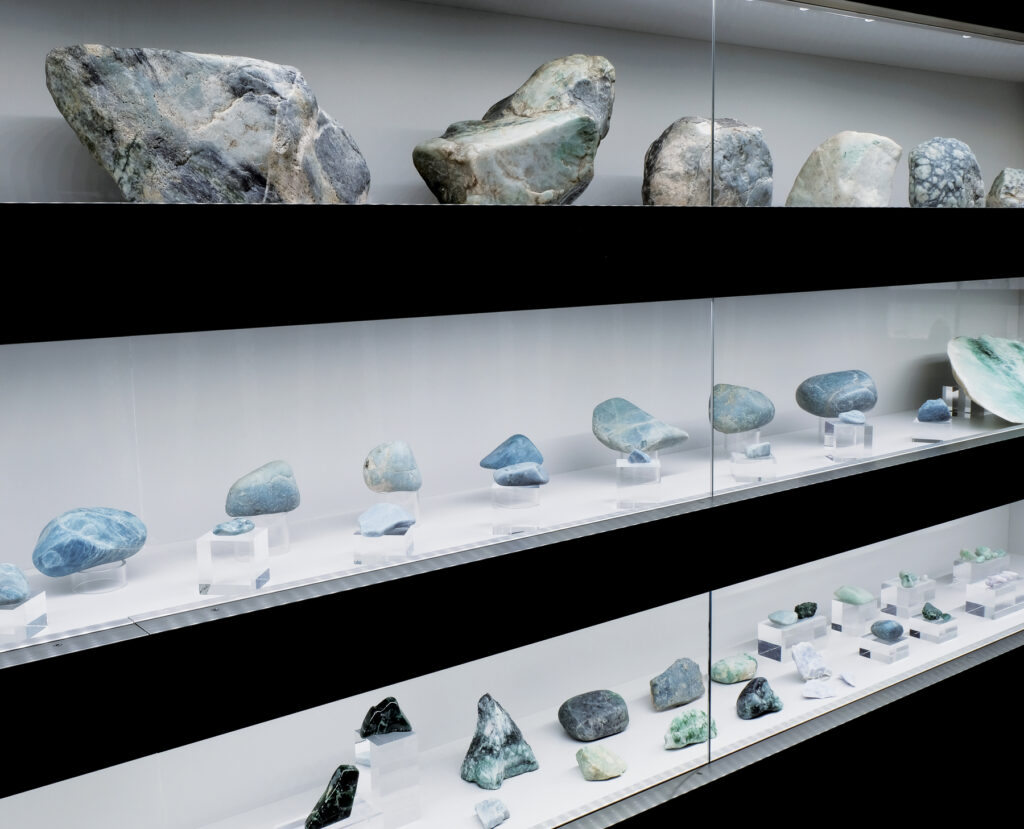
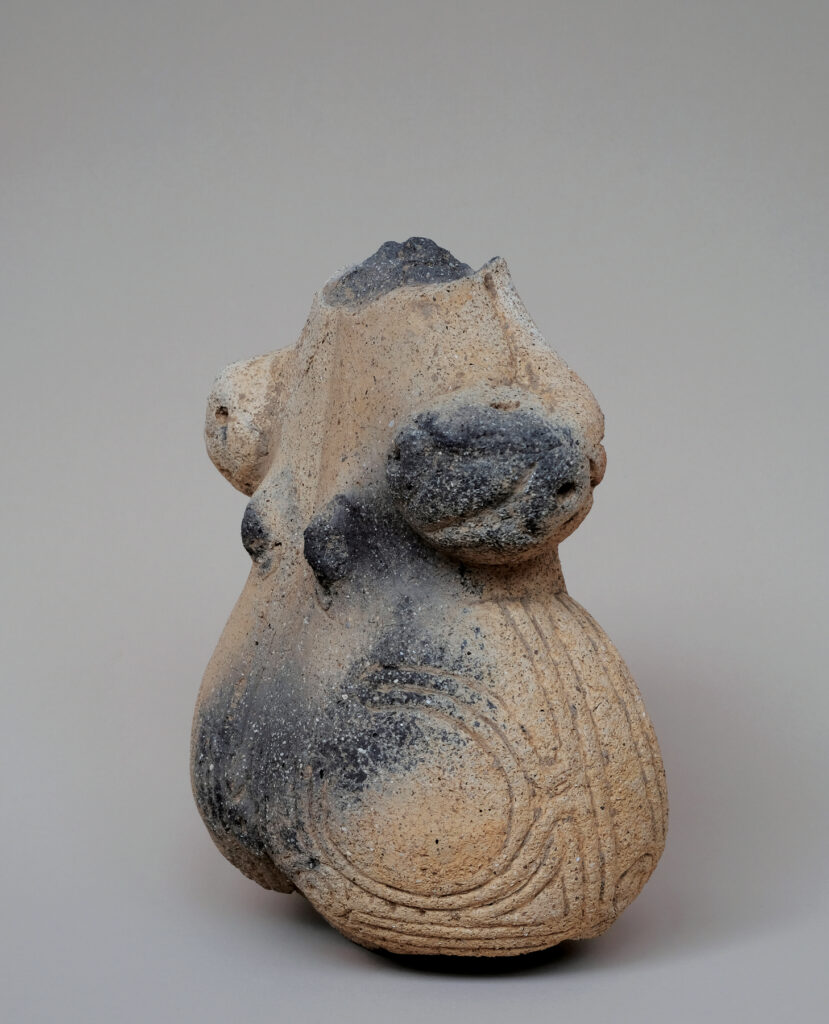
Continuing my jade journey, I visited the adjacent Chojagahara Archaeological Museum. Actually, the display here doesn’t include a whole lot of jade used by the Jomon people. After all, those artifacts are distributed widely throughout Japan and in the Korean peninsula and continental Asia. The highlight here is that I could explore the roots of that distribution.
History says jade was not used for decorative purposes from the start, but owing to its hardness, used as hammerstone. In other words, distribution channels were first forged with the stone axes crafted in Itoigawa, and later, around the Middle Jomon (about 5,000 years ago), when techniques were developed for working jade into various objects, the channels were in place for distributing the objects across the mountains and the waters. The Chojagahara site also turned up a beautifully plump and shapely dogu clay figurine missing its head and legs. As I was admiring it, I was reminded of the round shape of the pebbles that made the long journey to the sea and were smoothed and polished by the waves.
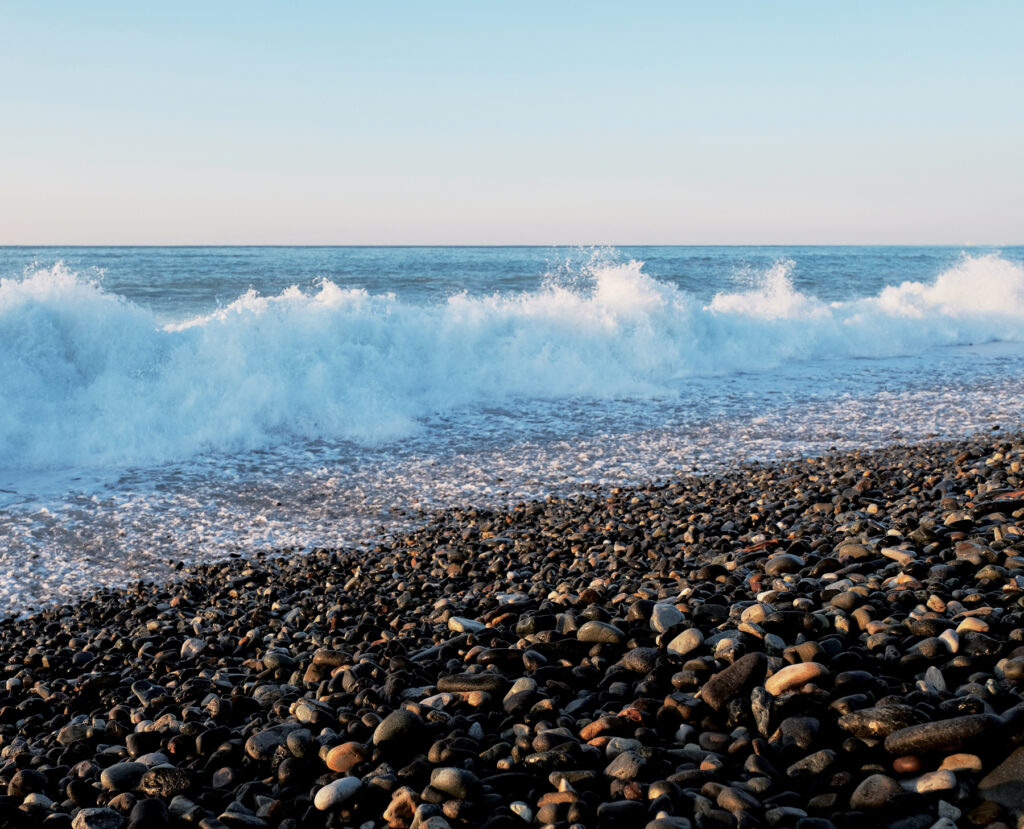
< PAPERSKY no.62(2020)>
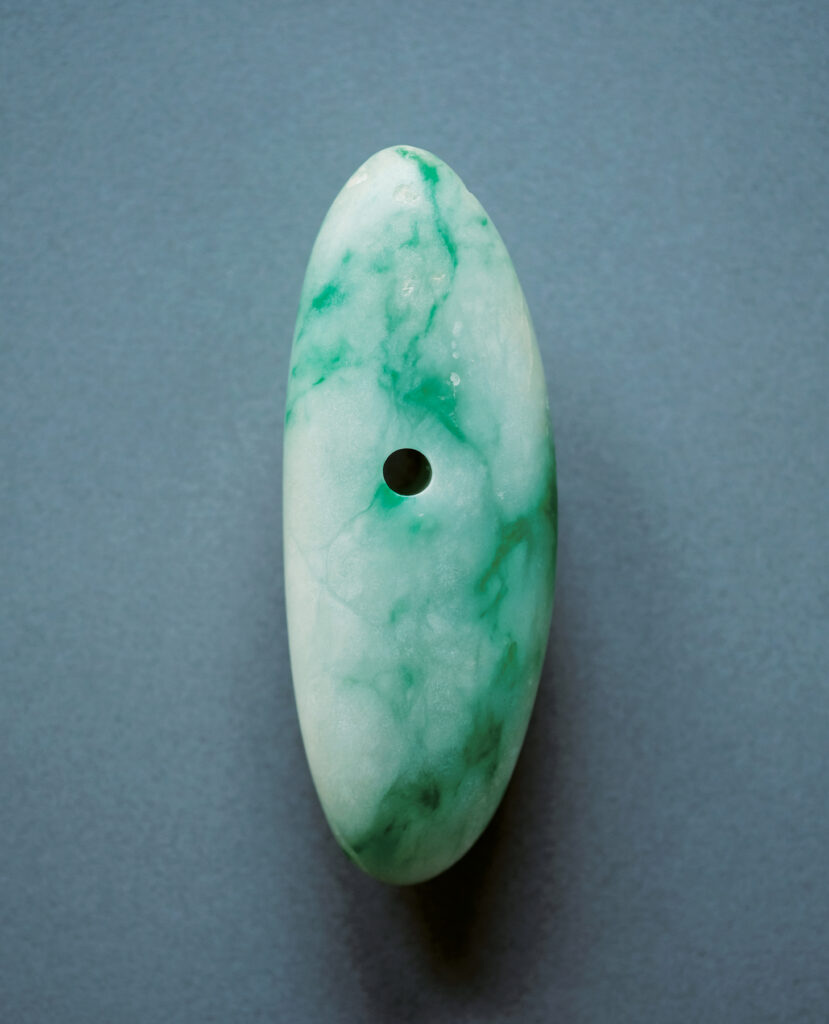
Jomon Fieldwork | Nao Tsuda × Lucas B.B. Interview
A conversation between ‘Jomon Fieldwork’ Photographer and writer Nao Tsuda and Papersky’s Editor-in-chief Lucas B.B. The two discuss the ways Jomon culture continues to play an important role in modern day Japan. The video was filmed at Papersky’s office in Shibuya in conjunction with Tsuda’s exhibition “Eyes of the Lake and Mother Mountain Plate” held at the Yatsugatake Museum in Nagano.
Nao Tsuda | photographer
Through his world travels he has been pointing his lens both into the ancient past and towards the future to translate the story of people and their natural world.
tsudanao.com











